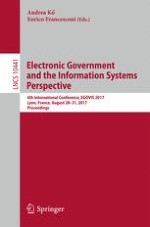2017 | OriginalPaper | Buchkapitel
Cast as Intended Verifiability for Mixed Array Ballots
verfasst von : Víctor Mateu, Magda Valls
Erschienen in: Electronic Government and the Information Systems Perspective
Aktivieren Sie unsere intelligente Suche, um passende Fachinhalte oder Patente zu finden.
Wählen Sie Textabschnitte aus um mit Künstlicher Intelligenz passenden Patente zu finden. powered by
Markieren Sie Textabschnitte, um KI-gestützt weitere passende Inhalte zu finden. powered by
